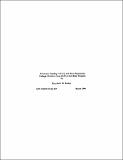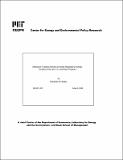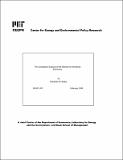Browsing Working Papers by Author "Bailey, Elizabeth M."
Now showing items 1-5 of 5
-
Allowance trading activity and state regulatory rulings : evidence from the U.S. Acid Rain Program
Bailey, Elizabeth M. (MIT Center for Energy and Environmental Policy Research, 1996)The U.S. Acid Rain Program is one of the first, and by far the most extensive, applications of a market based approach to pollution control. From the beginning, there has been concern whether utilities would participate ... -
Allowance trading activity and state regulatory rulings : evidence from the U.S. Acid Rain Program
Bailey, Elizabeth M. (MIT Center for Energy and Environmental Policy Research, 1998)The U.S. Acid Rain Program is one of the first, and by far the most extensive, applications of a market based approach to pollution control. From the beginning, there has been concern whether utilities would participate ... -
Auction design and the market for sulfur dioxide emissions
Joskow, Paul L.; Schmalensee, Richard; Bailey, Elizabeth M. (MIT Center for Energy and Environmental Policy Research, 1996)Title IV of the Clean Air Act Amendments of 1990 created a market for electric utility emissions of sulfur dioxide (SO2). Recent papers have argued that flaws in the design of the auctions that are part of this market have ... -
The geographic expanse of the market for wholesale electricity
Bailey, Elizabeth M. (MIT Center for Energy and Environmental Policy Research, 1998)This paper exploits a large mine-level database to contribute to our understanding of the micro-sources of productivity growth. The database contains observations for labor input and coal output at every mine in the United ... -
Intertemporal pricing of sulfur dioxide allowances
Bailey, Elizabeth M. (MIT Center for Energy and Environmental Policy Research, 1998)The Clean Air Act Amendments of 1990 initiated the first large-scale use of the tradable permit approach to pollution control. The theoretical case for this approach rests on the assumption of an efficient market for ...




